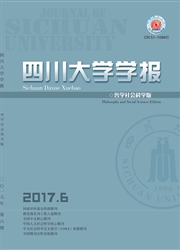

 中文摘要:
中文摘要:
低碳城市的兴起不仅是城市应对全球气候变化的解决方案,更是在全球价值链下的城市碳排放分工。受经济格局与碳排放格局不匹配的影响,由发达国家主导的消费拉动型低碳城市发展模式和由发展中国家主导的生产推动型低碳城市发展模式都面临着可持续性挑战。世界银行提出的ECO^2城市发展模式能将生态与经济相结合融入城市发展之中,为低碳城市的发展提供了可以选择的途径。按照《中国应对气候变化国家方案》提出的“一个结合、两面推进”的原则,ECO^2导向的低碳城市应协调构建生态路径和经济路径,形成城市低碳经济的循环体系。
 英文摘要:
英文摘要:
The rise of low-carbon cities is not only a solution to global climate change, but al- so the division of urban carbon emissions in the global value chain. Because of the disparity of e- conomic development and carbon emissions, the consumer-driven low-carbon urban development patterns promoted by the developed countries and the production-driven low-carbon urban devel- opment patterns promoted by the developing countries are faced with sustainability challenges. An urban development pattern under the rule of ECO^2 promoted by the World Bank is an optional approach for its integration of economy and ecology. Taking account of the principle of China's National Climate Change Program, the ECO^2-oriented low-carbon city should coordinate the eco- logical path and economic path to alternate to a circulatory system of urban low-carbon economy.
 同期刊论文项目
同期刊论文项目
 同项目期刊论文
同项目期刊论文
 期刊信息
期刊信息
